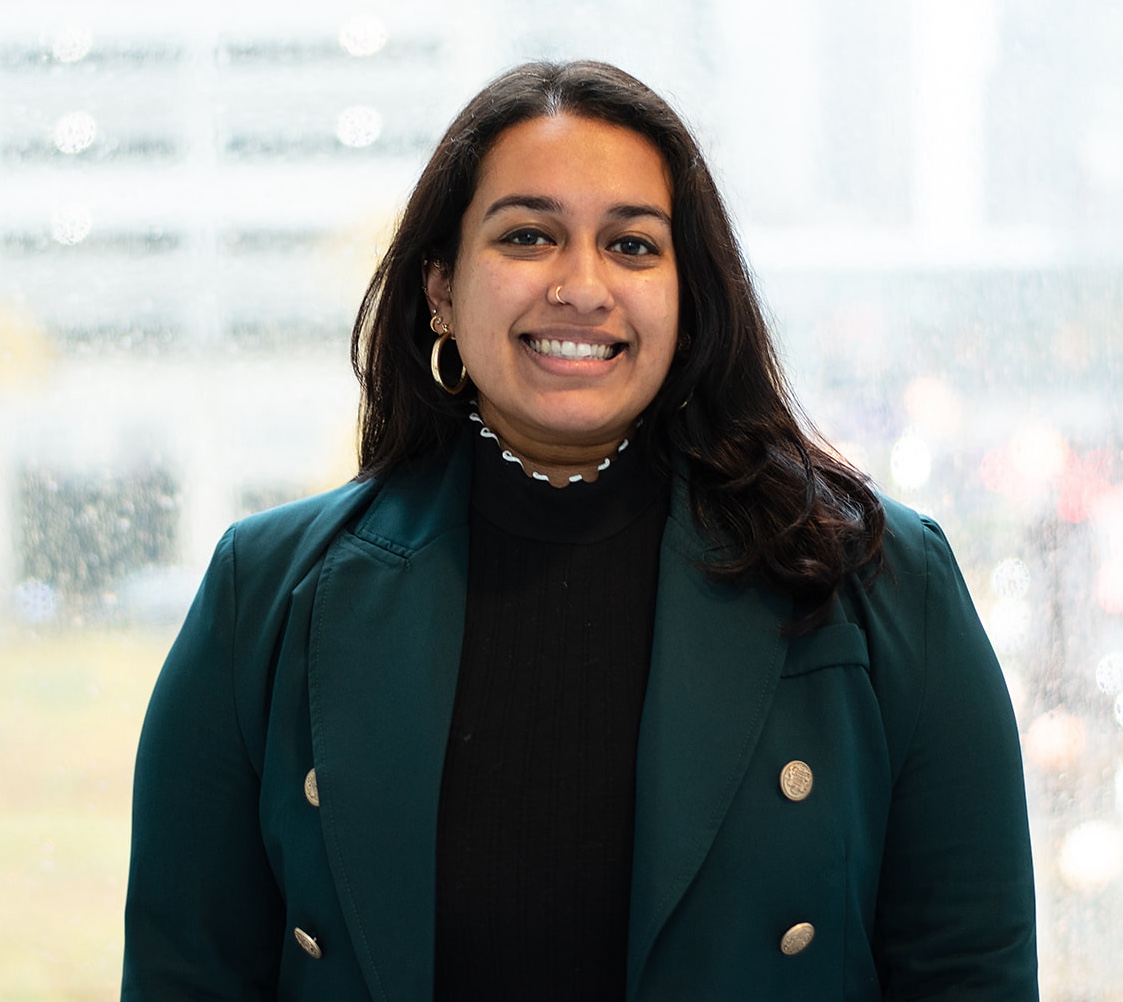CRS Scientist Spotlight on Prianka Hashim
Don’t be afraid to ask questions! We all start somewhere and the best way to gain knowledge is to learn from those around you.
Prianka Hashim
PhD-MPH candidate, Duncan Lab
Prianka Hashim is a PhD-MPH candidate in Dr. Francesca Duncan's lab. Her research focuses on investigating the role of the cGAS-STING pathway in ovarian inflammaging.

Thesis mentor: Francesca Duncan, PhD
Thesis title: "Elucidating the responsiveness and physiologic function of the cGAS-STING pathway in ovarian secondary follicles"
What brought you to join the CRS community and what is your current position?
I am a third year PhD-MPH candidate in Dr. Francesca Duncan’s lab. Prior to joining the CRS community, I was a research technician at the University of Michigan in the lab of Dr. Ariella Shikanov in collaboration with Dr. Molly Moravek looking at the impact of exogenous testosterone administration utilizing a transgender mouse model. Both of them are alumni of CRS who spoke highly of their time here and when applying to graduate programs, I knew I wanted to continue in the field reproductive science, and I was impressed by the diversity and breath of CRS.
Could you describe your research?
Individuals are born with a non-renewable reserve of ovarian follicles, indicating the need for tight regulation of follicle activation and growth to prioritize the removal of poor quality oocytes and favor fertilization of high quality oocytes to give rise to the next generation. My research is focused on the cGAS-STING pathway and determining if it functions as a surveillance mechanism to remove poor quality oocytes from the growing pool by detecting cytosolic double-stranded DNA.
What aspect(s) of CRS do you find most valuable?
I really appreciate how collaborative the members of CRS are. When starting a new technique or testing out a new reagent, members are always willing to assist and provide suggestions.
What has been the most valuable aspect to your training as a reproductive scientist?
I’ve been lucky to pursue my MPH while also being a reproductive scientist which has really made me think the impact our benchwork can potentially have at the population level. The intersection of these two fields as well as the career catalysts that provide exposure to careers in reproductive science have been extremely valuable.
What is one piece of advice you would give to young scientists starting in their journey in science?
Don’t be afraid to ask questions! We all start somewhere and the best way to gain knowledge is to learn from those around you.
What do you think will be the next big contribution in the reproductive biology field?
The female reproductive system is the first to age and globally, individuals continue to delay childbearing for a multitude of reasons. Additionally, menopause is associated with overall decreased health outcomes. Identifying mechanisms that contribute to this accelerated aging compared to other tissues in order to develop novel therapeutics to extend the female reproductive lifespan could be the next big contribution in the field.
What hobbies do you have outside of the lab?
Outside of lab I enjoy traveling, baking, and searching for new plants to add to my collection.